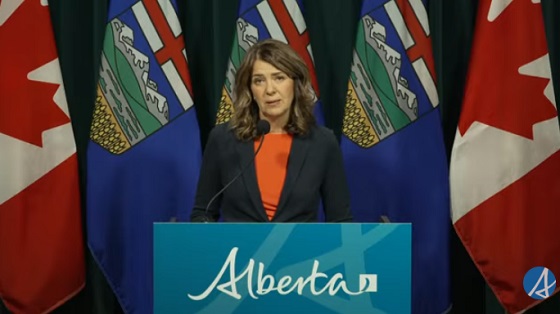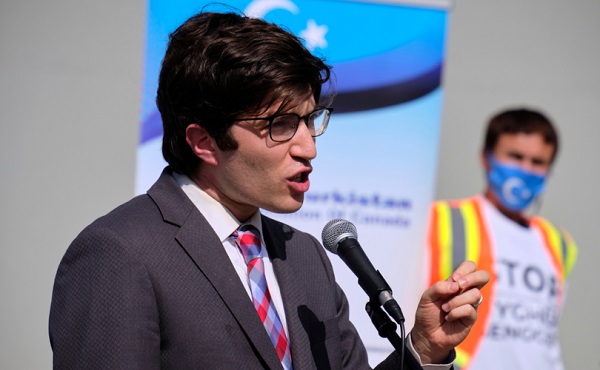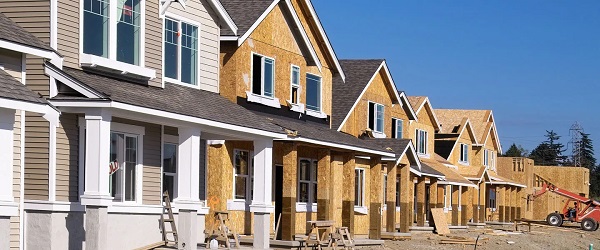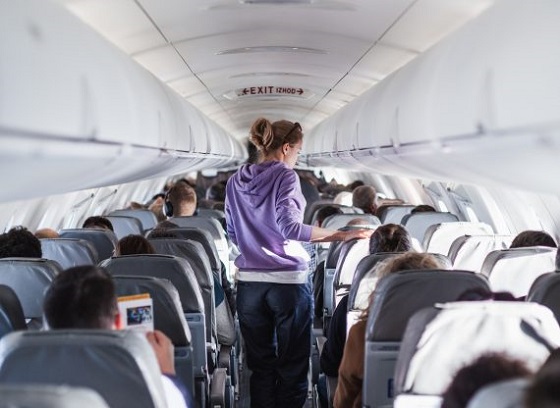Alberta
Our sports history has value

Simple confirmation that the Alberta Sports Hall of Fame has been operating without its standard financial aid from the provincial government prompted some interesting response during the last few days.
In a casual conversation, executive director Tracey Kinsella mentioned last week that COVID-19 made it necessary to cancel at least two annual fund-raisers – the Hall of Fame induction ceremony and its annual invitational golf tournament in Red Deer – and she was concerned about meeting routine expenses.
Consistently, the government’s contribution of $302,000 a year has been in the hands of Hall of Fame officials before the middle of the year. She expressed only mild frustration,, understanding that the coronavirus pandemic and other major financial issues have created major problems far from the world of sports. She did state that government staff members, working below the level of elected or appointed officials, have told her of their efforts to have the money forwarded as quickly as possible.
Perhaps this delay must be seen as part of a long and ongoing drop in Alberta’s financial support to amateur sports at all levels. In the 10-year period ending in 2019, the reduction reached $5.1 million – an average of $500,000 per year. We should hope not.
Some comparative figures seem to be well worth serious study:
* The economic impact of the 2019 Canada Winter Games in Red Deer was $110 million; impact of the 2018 Alberta Winter Games was $3.4 million for the Fort McMurray-Wood Buffalo area and $5.6 million for this host province;
* In 2018-19, Alberta Sport Connection, a sport delivery system disbanded months ago by the UPC, provided $7.2 million to be shared among 80 provincial sport organizations that delivered programming to more than 788,000 Albertans;
* Leduc hosted the 2016 Alberta Summer Games with an economic impact of $3.6 million for the area and $4.9 million for the province.
Still, government aid has dropped. Some citizens suggest minor and amateur sports should not receive government support during troubled times. Today it might be wise to ask Fort McMurray if that community will value the 2022 Arctic Winter Games? The record shows that numerous small- and mid-sized business stepped up during the 2018 Games, a difficult time for fire victims and petroleum companies that have served as a backstop to countless community and area projects.
After the severe floods earlier this year, it’s safe to guess that any international program that will improve community morale while adding some vital dollars to the public purse will be welcome. Incidentally, they’re headed to Wood Buffalo because COVID-19 forced cancellation of the scheduled 2020 event in Whitehorse. Fortunately, some of the dollars set aside and unused in the Northwest Territories have already arrived in Fort McMurray.
These days, surrounded by a crippled economy, I wonder if Alberta now wishes the 2026 Commonwealth Games were headed for Edmonton and 2026 Winter Olympics were coming to Calgary. Both possibilities were seriously discussed before being nixed.
During my five-year term as chair of Alberta Sport Connection, the organization received steady criticism for finishing third of fourth – usually in the rear of Quebec and Ontario – in provincial medal counts. I tried regularly to help almost any government official to focus on the cost of doing business.
It made no impact to point out that Alberta’s per-capita investment in sport programs is (or was) the second-lowest in Canada. Sorry, I can’t remember which province spent less, but I am sure that Saskatchewan receives $24.39 per capita and Newfoundland gets $8.36 per capita.
Alberta receives $3.85 per capita although 82 per cent of Albertans say in polls that they believe sport contributes to quality of life. And those I have spoken to say clearly that the Alberta Sports Hall of Fame has value.
Alberta
Alberta bill would protect freedom of expression for doctors, nurses, other professionals

From LifeSiteNews
‘Peterson’s law,’ named for Canadian psychologist Jordan Peterson, was introduced by Alberta Premier Danielle Smith.
Alberta’s Conservative government introduced a new law that will set “clear expectations” for professional regulatory bodies to respect freedom of speech on social media and online for doctors, nurses, engineers, and other professionals.
The new law, named “Peterson’s law” after Canadian psychologist Jordan Peterson, who was canceled by his regulatory body, was introduced Thursday by Alberta Premier Danielle Smith.
“Professionals should never fear losing their license or career because of a social media post, an interview, or a personal opinion expressed on their own time,” Smith said in a press release sent to media and LifeSiteNews.
“Alberta’s government is restoring fairness and neutrality so regulators focus on competence and ethics, not policing beliefs. Every Albertan has the right to speak freely without ideological enforcement or intimidation, and this legislation makes that protection real.”
The law, known as Bill 13, the Regulated Professions Neutrality Act, will “set clear expectations for professional regulatory bodies to ensure professionals’ right to free expression is protected.”
According to the government, the new law will “Limit professional regulatory bodies from disciplining professionals for expressive off-duty conduct, except in specific circumstances such as threats of physical violence or a criminal conviction.”
It will also restrict mandatory training “unrelated to competence or ethics, such as diversity, equity, and inclusion training.”
Bill 13, once it becomes law, which is all but guaranteed as Smith’s United Conservative Party (UCP) holds a majority, will also “create principles of neutrality that prohibit professional regulatory bodies from assigning value, blame or different treatment to individuals based on personally held views or political beliefs.”
As reported by LifeSiteNews, Peterson has been embattled with the College of Psychologists of Ontario (CPO) after it mandated he undergo social media “training” to keep his license following posts he made on X, formerly Twitter, criticizing Trudeau and LGBT activists.
He recently noted how the CPO offered him a deal to “be bought,” in which the legal fees owed to them after losing his court challenge could be waived but only if he agreed to quit his job as a psychologist.
Early this year, LifeSiteNews reported that the CPO had selected Peterson’s “re-education coach” for having publicly opposed the LGBT agenda.
The Alberta government directly referenced Peterson’s (who is from Alberta originally) plight with the CPO, noting “the disciplinary proceedings against Dr. Jordan Peterson by the College of Psychologists of Ontario, demonstrate how regulatory bodies can extend their reach into personal expression rather than professional competence.”
“Similar cases involving nurses, engineers and other professionals revealed a growing pattern: individuals facing investigations, penalties or compulsory ideological training for off-duty expressive conduct. These incidents became a catalyst, confirming the need for clear legislative boundaries that protect free expression while preserving professional standards.”
Alberta Minister of Justice and Attorney General Mickey Amery said regarding Bill 13 that the new law makes that protection of professionals “real and holds professional regulatory bodies to a clear standard.”
Last year, Peterson formally announced his departure from Canada in favor of moving to the United States, saying his birth nation has become a “totalitarian hell hole.”
Alberta
‘Weird and wonderful’ wells are boosting oil production in Alberta and Saskatchewan

From the Canadian Energy Centre
Multilateral designs lift more energy with a smaller environmental footprint
A “weird and wonderful” drilling innovation in Alberta is helping producers tap more oil and gas at lower cost and with less environmental impact.
With names like fishbone, fan, comb-over and stingray, “multilateral” wells turn a single wellbore from the surface into multiple horizontal legs underground.
“They do look spectacular, and they are making quite a bit of money for small companies, so there’s a lot of interest from investors,” said Calin Dragoie, vice-president of geoscience with Calgary-based Chinook Consulting Services.
Dragoie, who has extensively studied the use of multilateral wells, said the technology takes horizontal drilling — which itself revolutionized oil and gas production — to the next level.
“It’s something that was not invented in Canada, but was perfected here. And it’s something that I think in the next few years will be exported as a technology to other parts of the world,” he said.
Dragoie’s research found that in 2015 less than 10 per cent of metres drilled in Western Canada came from multilateral wells. By last year, that share had climbed to nearly 60 per cent.
Royalty incentives in Alberta have accelerated the trend, and Saskatchewan has introduced similar policy.
Multilaterals first emerged alongside horizontal drilling in the late 1990s and early 2000s, Dragoie said. But today’s multilaterals are longer, more complex and more productive.
The main play is in Alberta’s Marten Hills region, where producers are using multilaterals to produce shallow heavy oil.
Today’s average multilateral has about 7.5 horizontal legs from a single surface location, up from four or six just a few years ago, Dragoie said.
One record-setting well in Alberta drilled by Tamarack Valley Energy in 2023 features 11 legs stretching two miles each, for a total subsurface reach of 33 kilometres — the longest well in Canada.
By accessing large volumes of oil and gas from a single surface pad, multilaterals reduce land impact by a factor of five to ten compared to conventional wells, he said.
The designs save money by skipping casing strings and cement in each leg, and production is amplified as a result of increased reservoir contact.
Here are examples of multilateral well design. Images courtesy Chinook Consulting Services.
Parallel
Fishbone
Fan
Waffle
Stingray
Frankenwells
-

 Energy1 day ago
Energy1 day agoExpanding Canadian energy production could help lower global emissions
-

 Business1 day ago
Business1 day agoWill the Port of Churchill ever cease to be a dream?
-

 Great Reset2 days ago
Great Reset2 days agoEXCLUSIVE: The Nova Scotia RCMP Veterans’ Association IS TARGETING VETERANS with Euthanasia
-

 Daily Caller2 days ago
Daily Caller2 days agoSpreading Sedition? Media Defends Democrats Calling On Soldiers And Officers To Defy Chain Of Command
-

 COVID-1920 hours ago
COVID-1920 hours agoFreedom Convoy protestor Evan Blackman convicted at retrial even after original trial judge deemed him a “peacemaker”
-

 Health2 days ago
Health2 days agoDisabled Canadians petition Parliament to reverse MAiD for non-terminal conditions
-

 Business1 day ago
Business1 day agoThe numbers Canada uses to set policy don’t add up
-

 Business1 day ago
Business1 day agoNew airline compensation rules could threaten regional travel and push up ticket prices











